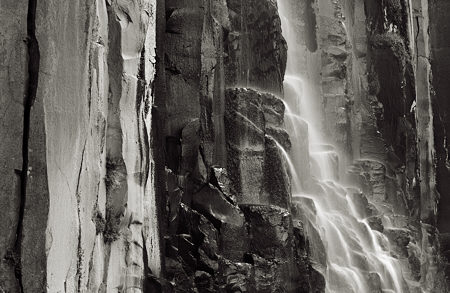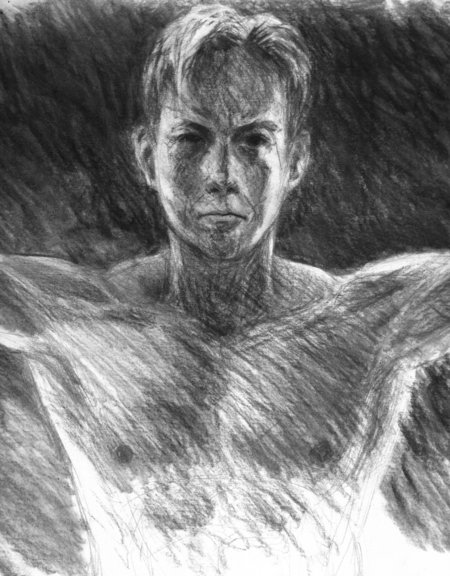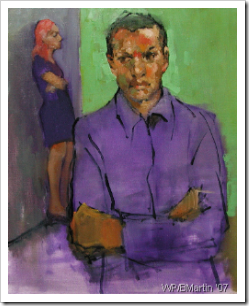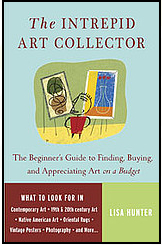Posted by Birgit Zipser on March 9th, 2007
email from my friend Ginger with whom I share love of photography and interest in holistic medicine:
Thank you for sharing Richard’s photos and autobiographical narrative. It is courageous and inspiring at the same time. Art is and can be healing. For me the camera is still a bit of a shield…and so I’m never quite happy with what I do. A shield from being seen and conversely not seeing fully.

more… »
Posted by Doug Plummer on March 6th, 2007
I was planning on posting this anyway, apropos of leaving on vacation with my wife, Robin, today. Then I saw Steve Durbin’s entry, and realized it would be the perfect follow-up. It’s a piece she wrote for my blog last year, but I think only 30 people saw it at the time. Her advice deserves a wider audience.
Advice to photographers’ significant others:
- When on a shoot or on the road, always bring food, water, and a book. If the light becomes “perfect” (usually early or late in the day, or if it’s overcast in just the right way), your photog will be captivated by it. Do insist on your right to go to the bathroom, be dropped at the hotel before the light comes in, or have your basic needs taken care of.
- Don’t take it personally when he says, “The light is beautiful on you.” You could be a rock, or a stump, or a wall. But he probably loves you anyway.
- Don’t take it personally when you become the “foreground element”. It’s not about you. You’re just the one that’s there.
- Do take it personally, in the best way, if you become the object of many studies. Photographers connect with the world through their cameras. It is another way of being known.
- You don’t have to like all of the work, if you like the photographer. Doug has one body of work that is too visually complex for my brain to process. None of this work is in the living room. If your person needs you to love every picture, send him to therapy. If you think you need to love every picture, go yourself.
- Get used to schedule changes. Your photog might find out on Tuesday that he’s going to Ireland for two weeks on Thursday. Have friends to fill in the gap. Accommodations I figured out included putting in a watering system for the garden, hiring people to do some of his tasks, and letting myself be pissed about the changes, until I’m not.
- Keep in contact. In most places in the developed world, there are local cell phones for sale. Speak often. Email. Whine. Say endearments. Listen to whining. Support. Ask for support. It’s good glue. We talk almost every day. I especially like to bask in Doug’s excitement when he’s on a shoot and it’s going well. He does bliss well.
- It’s okay to demand that the geek speak stops, when you’ve run out of patience for it. Especially if they’re talking about digital workflows. It’s rude for people to speak in a language not shared by others.
- When he comes back into town with 4,000 images to process, make some dates to connect, but don’t expect that he’ll be fully there until the images are on a disc and sent away. Then you can have the coming-back fight and really connect.
- It’s OK to play the wife role, whatever your gender, on occasion. I do this at openings and print sales and during the big post-shoot image processing. Other times, be who you are, more than wife. Doug is the wife at my conferences and book signings and when I’m writing. It’s OK to be flexible. Don’t get caught up in the role. It’s not a full enough identity for anyone.
- If you’re traveling together, don’t think you have to be joined at the hip. Pursue your own interests, then meet later. Do ask your person to leave the camera in the room or in the bag for a meal or an evening. Suggesting that making contact with you might allow your photog to “get lucky” can help this occur. It works for me.
- If he’s been gone for a long time, and you’ve had the house to yourself, expect conflict on re-entry. It’s normal. It’s predictable. Just have it. He’s invading your space, after all.
- Dont worry about the “Bridges of Madison County” scenario. You know how he really is.
- A story: Several years ago, outside of Banff, after a full day of shooting, the light changed and Doug became enchanted. I was really hungry. After 45 minutes, I demanded to be driven into town for food. Reluctantly, Doug packed up his gear, and we drove to a 2nd-floor sushi bar. I was facing the window. The light was magical. We ordered anyway. Before the fish came, I saw a rainbow over Mount Rundle. I said, “Doug, get your gear and get out there.” He did. 20 minutes later he returned. Three minutes later, the second rainbow appeared, arcing over the other. “Get back out there, now!” The waiter didn’t know what was going on. He kept asking if everything was alright. He didn’t understand my explanation: “My husband is a photographer.”
Robin’s blog (on therapy issues, for other therapists–you think photographer’s use geekspeak?) is at Trauma & Attachment.
Posted by Steve Durbin on March 6th, 2007

My landscape photography has grown out of activities I would engage in anyway. I’ve always loved hiking, be it in the mountains, the woods, the desert — anywhere. These days I usually have my camera along. Sometimes I’ll be in an area I suspect might be interesting photographically, but usually I’m just in a place I want to explore. Either way, I don’t feel cheated if I take no pictures at all, and I’ve never had a bad time. But I have found a difference between productive and unproductive outings. The key predictor is whether I’m alone.
more… »
Posted by Steve Durbin on March 2nd, 2007
David Palmer’s show at the William Turner Gallery in Santa Monica opened last weekend. I’ve been intrigued by David’s work since I first saw it on his web site, and I’d been pestering him for an interview, which we finally did by email. I found it a fascinating view into the ideas and materials and process of David’s art making. It came out long, but it’s all good stuff. Just cowboy up and read it!

Major Motion Picture (Forever Almost Falling, 2006)
more… »
Posted by Rex Crockett on February 24th, 2007
It is fitting, I think, to follow a post on vanity with a self portrait.

Self Portrait, February 2007, Charcoal on Paper, 9×12
This is no vanity picture, however.
more… »
Posted by Guest Poster on February 23rd, 2007
Why does a museum curator choose one artist’s work over another’s? What themes or subject matter are dealers so sick of that they won’t even consider your slides?
From responses to my book The Intrepid Art Collector and discussion on my blog, I have learned that artists often don’t know the answers to these types of questions. Instead, there is widespread confusion about the inner workings of the art world. This is unfortunate because, if you are an artist, what you don’t know can hurt you.
Where should artists go to learn more about how the art world works? A contemporary art museum recently asked me to consult on how they can make their website more popular. It occurred to me that what would make a museum site interesting is if it were a place not simply to learn what art is in the museum, but why that art is the museum. To explain the “why,” I want to interview curators and ask them to explain how they picked a particular work of art for their museum (where they heard of it, what made it stand out from the others). I want to interview the artists whose work gets into the contemporary museums to find out how they “made it,” how they broke out of the pack of artists with the same goal.
Can you imagine visiting a museum website to find out how the art world really works?
Here are some other topics I could write about in depth for the museum’s site. Which of these would interest you the most?
- Should artists donate their art to museums, and if so, will the museum actually exhibit it?
- Are some artists better off outside of major art centers, where “locals” get more attention from museums?
- What are the options for artists whose work is out of fashion at the moment?
- Does being an assistant to a major artist lead to career opportunities, or does it tar you as a “fabricator”?
- How important is an artist’s personality? (I can already answer this one — it’s critical. One curator I know won’t even consider showing someone who’s “difficult” to work with). How can you avoid making enemies without being a phony?
- Why do curators seem to favor young artists? And how can a mid- career artist break out? Is it too late?
- What type of paid-gallery rip-offs do artists need to beware of?
- Which prizes and competitions actually mean something to major curators and dealers?
Please let me know what you think. At this early stage in thinking about the museum’s website, your feedback would be extremely valuable.
Posted by Bob Martin on February 22nd, 2007
I’ve always had this interest in how I might be able to tell a story in my paintings, without having to layout every detail.

This painting is a “work in progress” and for me it’s about distance. The two figures have adopted the same stance and maybe for different reason. Because they appear to be in the same location/room, they are together. I will find out what they are about as I continue to paint. Figuring out the story is one of the most enjoyable parts of painting for me.






